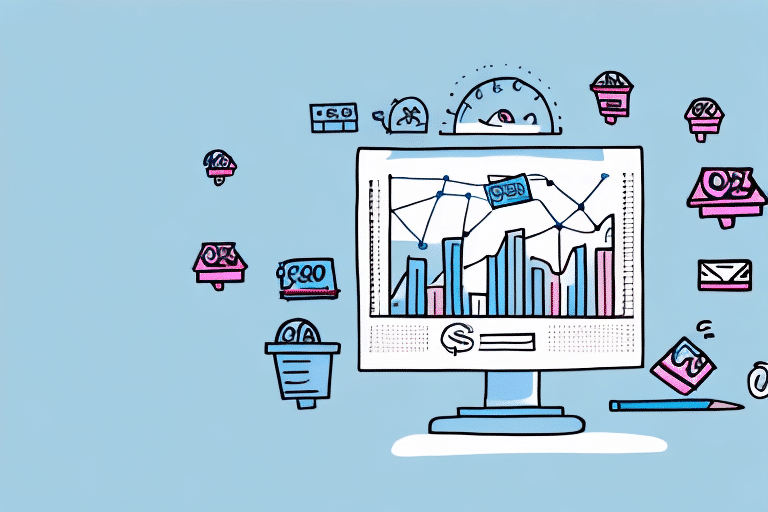Understanding Customer Retention in E-Commerce
In the highly competitive world of e-commerce, customer retention is more critical than ever before. It refers to the percentage of customers who continue to do business with you over time. According to a recent Shopify report, the average customer retention rate for e-commerce businesses hovers around 32%, though this can vary widely depending on the industry, business model, and the strategies implemented to foster loyalty.
Why Is Customer Retention Important for E-Commerce?
Benefits of Retaining Loyal Customers
- Cost Efficiency: Retaining existing customers reduces the need for continuous acquisition efforts, lowering marketing and advertising costs.
- Increased Revenue: Loyal customers tend to spend more over time, contributing to higher lifetime value.
- Organic Growth: Satisfied customers are more likely to refer friends and family, expanding your customer base organically.
- Enhanced Brand Reputation: Consistent positive experiences build trust and a strong brand reputation in the market.
Impact on Business Stability
Focusing on customer retention provides a steady revenue stream, making your business more resilient to market fluctuations and competitive pressures.
Calculating Your Customer Retention Rate
Step-by-Step Calculation
- Determine the number of customers at the start of the period.
- Identify the number of customers who made repeat purchases during the period.
- Use the formula: (Number of Repeat Customers / Total Customers at Start) × 100 to calculate the retention rate.
For instance, if you started the year with 1,000 customers and 320 made repeat purchases, your retention rate would be 32%.
Distinguishing Retention from Satisfaction
It's important to note that customer retention is not synonymous with customer satisfaction. A customer may be satisfied with a purchase but may not necessarily return for future transactions. Therefore, implementing strategies that encourage repeat business is essential.
Factors Affecting Customer Retention in E-Commerce
Key Influencers
- Customer Support Quality: Prompt and effective support enhances satisfaction and loyalty.
- Product Quality: High-quality products meet or exceed customer expectations, encouraging repeat purchases.
- Website User Experience: A seamless, intuitive website makes shopping enjoyable and hassle-free.
- Unique Value Proposition: Clear differentiation from competitors attracts and retains customers.
Additional Considerations
Other significant factors include competitive pricing, a simplified checkout process, effective product recommendations, proactive communication, and efficient delivery and returns management.
Payment Options
Offering multiple payment methods, such as credit cards, PayPal, and digital wallets, can increase customer satisfaction and reduce cart abandonment rates.
Strategies to Improve Customer Retention
Loyalty Programs
Implementing loyalty programs that reward repeat purchases, offer exclusive discounts, and provide personalized offers can significantly boost retention rates.
Personalized Marketing
Tailoring marketing efforts based on customer behavior and preferences creates a more engaging and relevant experience, fostering loyalty.
Exceptional Customer Service
Offering multiple support channels and ensuring quick resolution of inquiries and issues builds trust and encourages repeat business.
Product Recommendations and Reviews
Providing personalized product suggestions and showcasing customer reviews can enhance the shopping experience and drive repeat purchases.
Referral Programs
Encouraging customers to refer others through incentives can expand your customer base while reinforcing loyalty among existing customers.
The Role of Personalization in Customer Retention
Creating Personalized Experiences
Personalized shopping experiences, content, and product recommendations make customers feel valued, increasing the likelihood of repeat business.
Data Utilization
By analyzing customer data, e-commerce businesses can better understand preferences and behaviors, allowing for more targeted and effective personalization strategies.
Building Community
Fostering a sense of community through personalized interactions and content can enhance customer engagement and loyalty.
Leveraging Email Marketing for Retention
Effective Email Strategies
- Welcome Series: Introduce new customers to your brand and offerings.
- Abandoned Cart Emails: Remind customers of items left in their cart to encourage completion of purchases.
- Re-Engagement Campaigns: Reconnect with inactive customers through targeted offers and content.
- Surveys and Feedback Requests: Gather insights to improve products and services.
Audience Segmentation
Dividing your email list into segments based on demographics, purchase history, or behavior allows for more relevant and effective communication.
Measuring the Success of Retention Efforts
Key Metrics to Track
- Customer Retention Rate: Percentage of customers retained over a specific period.
- Customer Lifetime Value (CLV): Total revenue expected from a customer over their relationship with your business.
- Repeat Purchase Rate: Frequency at which customers make repeat purchases.
- Net Promoter Score (NPS): Measures customer loyalty and the likelihood of recommending your brand.
Continuous Improvement
Regularly monitoring these metrics allows businesses to assess the effectiveness of their retention strategies and make necessary adjustments.
Case Studies: Successful Customer Retention Strategies
Amazon Prime
Amazon's Prime membership program offers benefits like free shipping, exclusive deals, and streaming services, fostering high retention rates and customer loyalty.
Sephora's Beauty Insider
Sephora's loyalty program rewards customers with points for purchases, exclusive products, and personalized experiences, enhancing customer retention.
Starbucks Rewards
Starbucks' loyalty program offers rewards, personalized offers, and convenient ordering, encouraging repeat business and strong customer loyalty.
Conclusion: The Imperative of Focusing on Customer Retention
In conclusion, customer retention is a critical component of success in the e-commerce landscape. By improving retention rates, businesses can achieve increased revenue, enhanced profitability, a stronger brand reputation, and higher customer lifetime value. Implementing effective retention strategies, such as loyalty programs, personalized marketing, and exceptional customer service, enables e-commerce businesses to build long-term, profitable relationships with their customers, ensuring sustained growth and success in the dynamic digital marketplace.




















